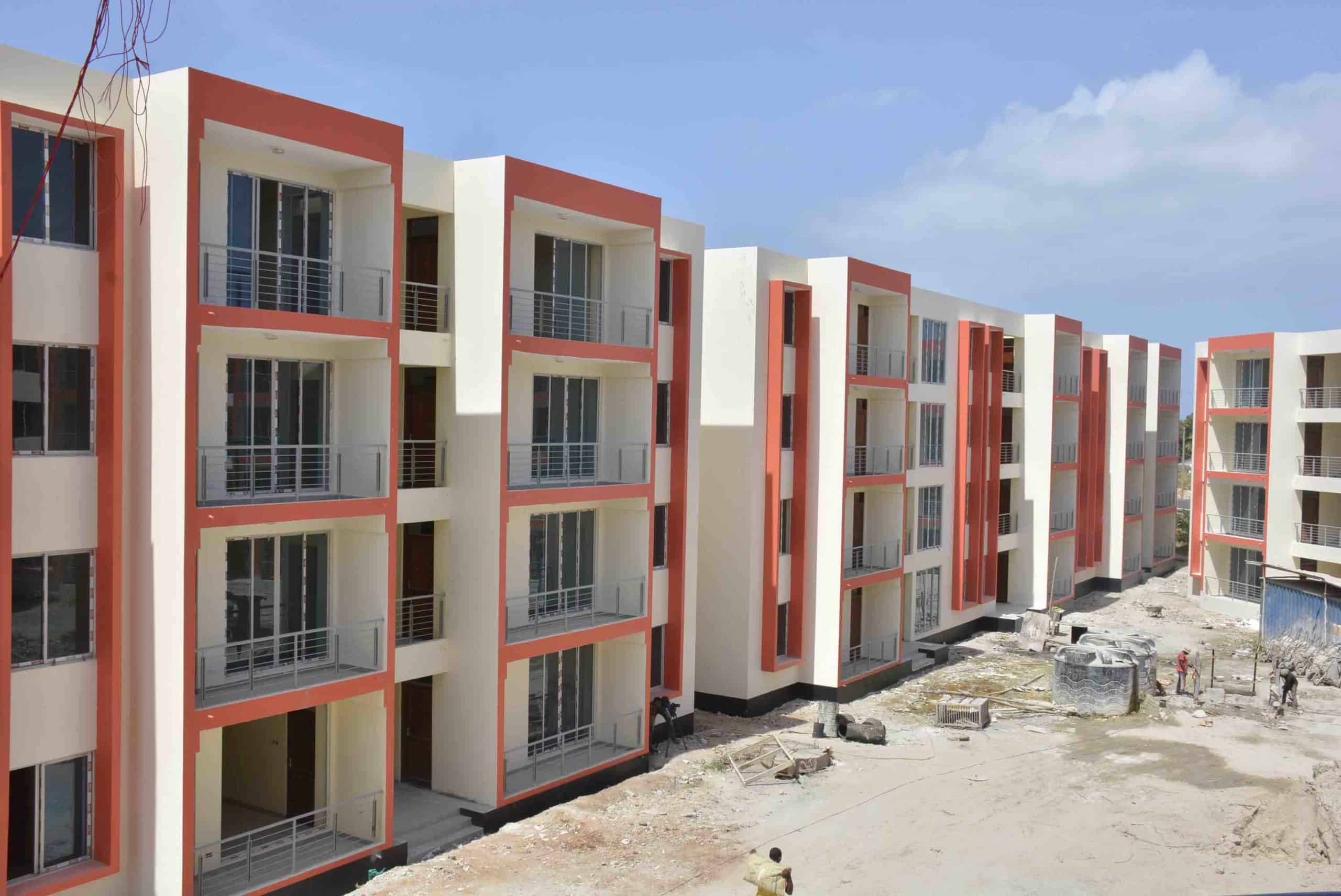If you’re about to change your kitchen countertop and also wish it to look more luxurious in the near future, then it is the most excellent time to start. With this in mind, marble is the obvious choice. But it’s costly; thus, you turn to the next best thing: granite. However, granite kitchen countertops are not very familiar to average homeowners, where he or she is used to getting a feel of wooden or cement surfaces.
Granite is an outstanding natural material most commonly used in any home improvement project. It’s strong enough to support operations such as cutting of food items, and eye-catching to suit any kitchen décor. Most interior designers admire this rock, and it’s often seen enhancing the countertops of lavish homes. First of all, granite is more versatile because it can be of different types, colors, and cuts. You might even have a hard time trying to decide which one is the one for you.
If you’re looking for information that would enable you to select granite for kitchen countertops reading this post, will not be disappointed. Keep reading to learn more.
1. Granite Types and color
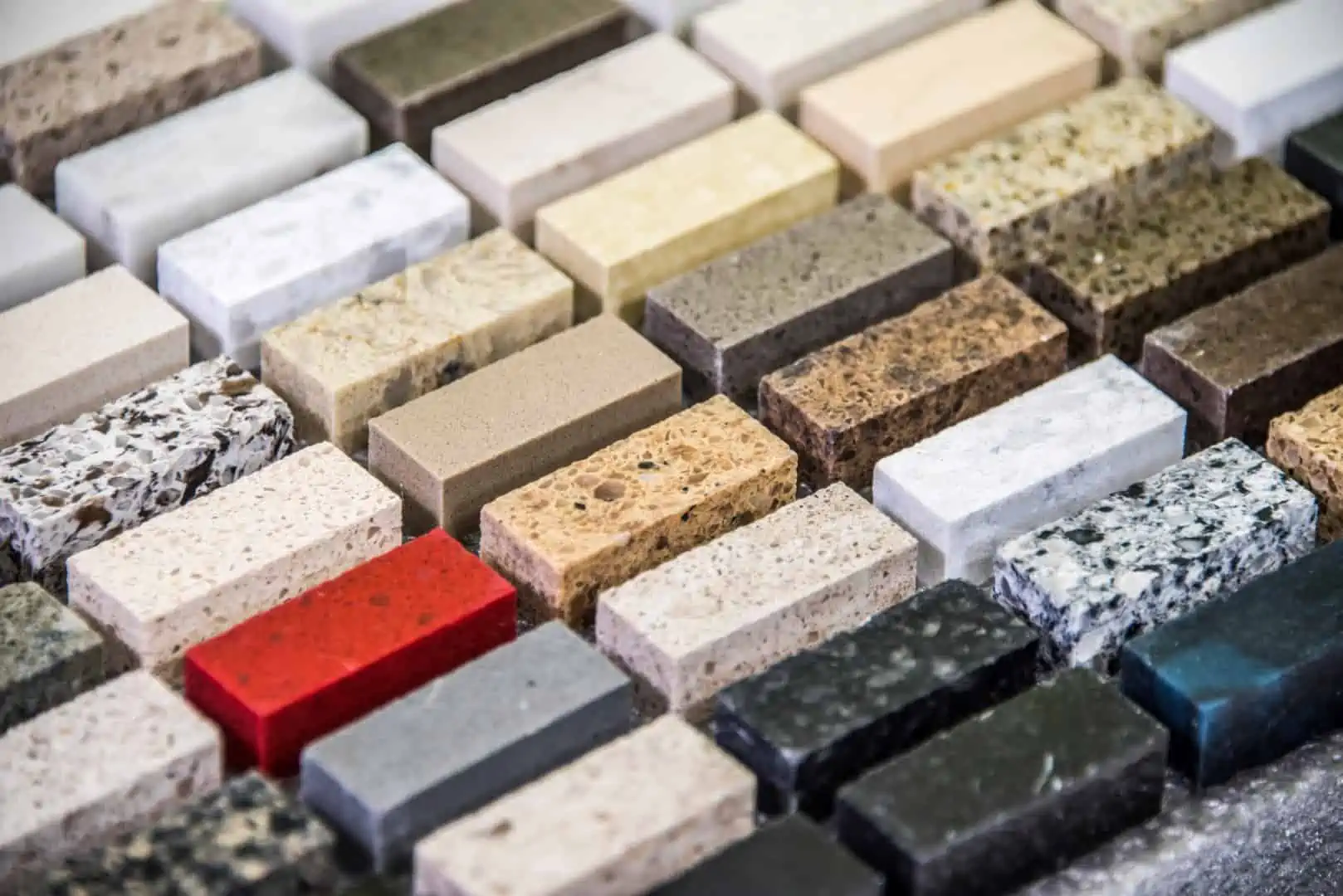
Granite is composed of different rocks that give it various colors. It contains quartz, feldspar, and sometimes mica. Each time a person tries to shop for the granite slabs he/she will realize that they are not identical in any way. In the natural sense, it is impossible to have similar rocks, when cutting in stones, just like people have different fingerprints.
Your preferred countertop installer should help you decide on the type of granite countertop that will fit well in your kitchen design. But before you visit one, it’s best to review the colors, which you can find here:
Black Granite
The black granite countertop is gabbro rock, a stone similar to basalt. Many of the kitchen granite countertops that are made primarily of black granite or ubatuba granite contain minerals and rocks such as diorite, diabase, and norite. They may also contain basalts and gabbros for instance.
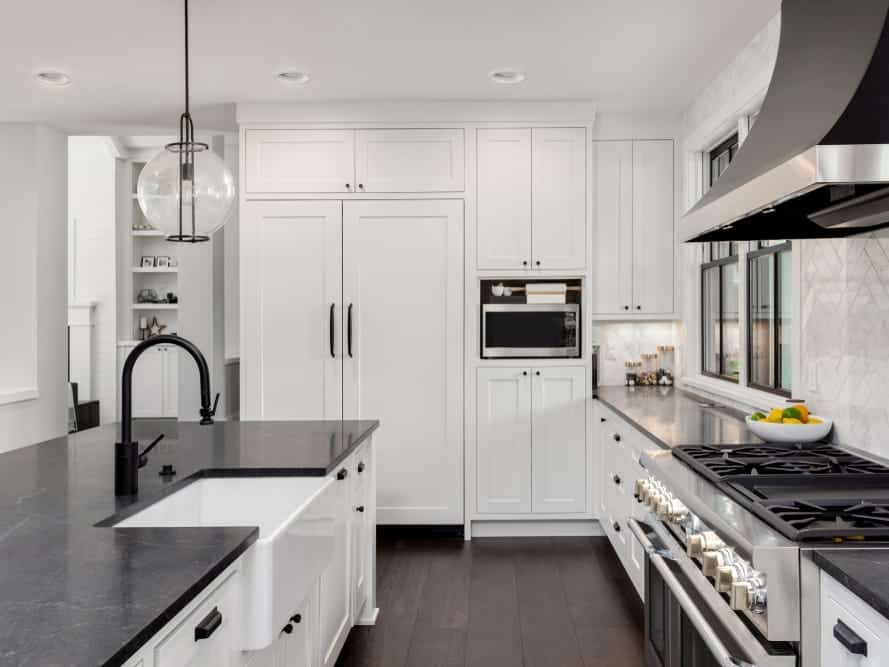
Image Source: i.insider.com
As for the material, if you are in a monochromatic kitchen then black granite countertops should blend in with your counter. It’s shiny to the touch complements white cabinets brilliantly, and is ideal for large, lighted kitchens.
White Granite
This type is one of the most used for table tops. Natural white granite is characterized by veins, small discolorations, and distinctly varying shades of white. Today, if you come across granite countertops that are entirely white, chances are they are quartz.
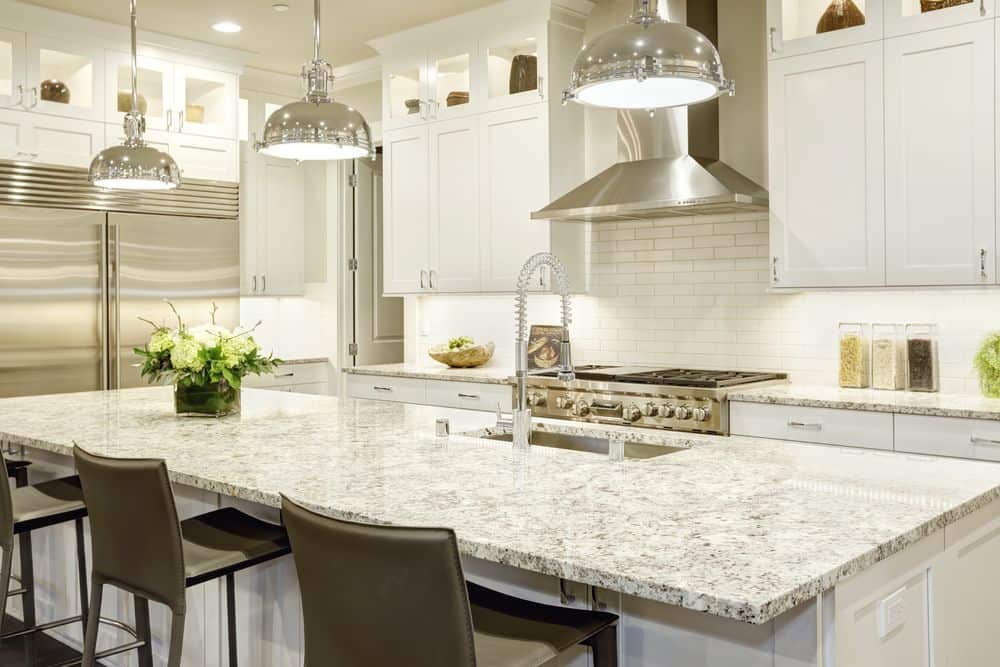
Image Source: i.pinimg.com
If you’re in want of a more vibrant, brilliant, and modern surface for your kitchen countertops, white granite is your most favorable selection. It matches almost any theme or color.
Gray Granite
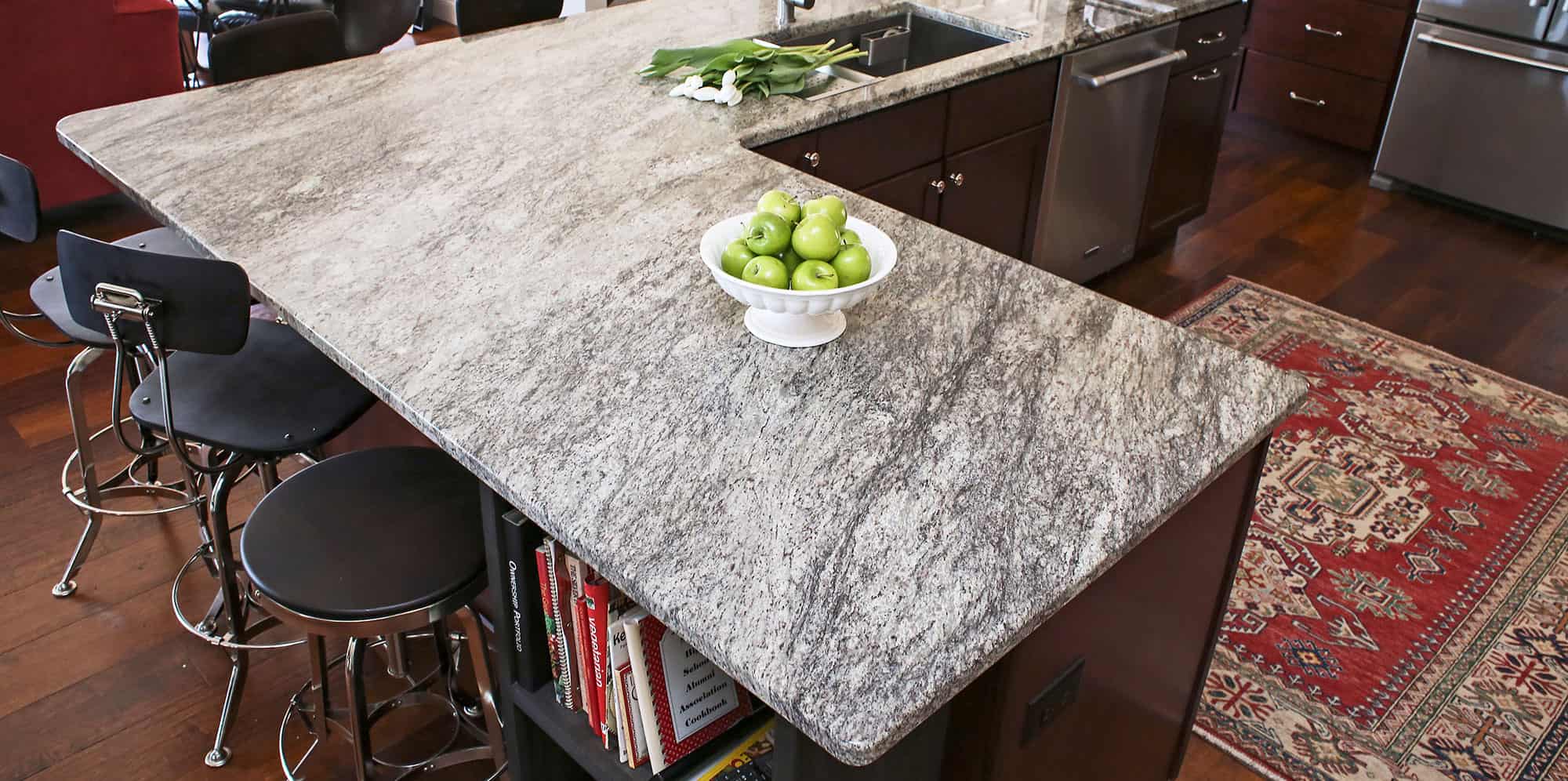
Image Source: rumfordstone.com
Gray is another favorite granite color among homeowners. It is colored mostly white with blotches of reds, blacks, and silvers. This is a material that is as classy as white but less invasive than black.
Brown or Gold Granite
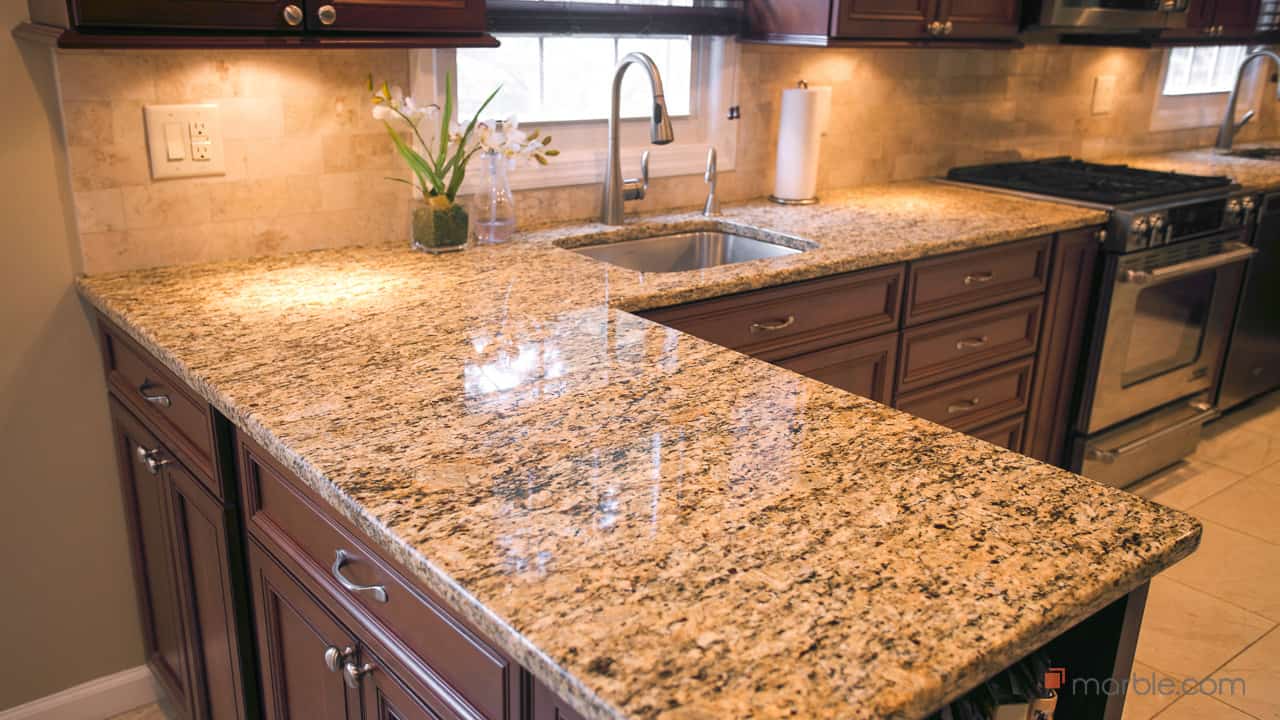
Image Source: marble.com
Sometimes people are not aware that granite is available in colors and tints of brown and gold. The brown type of granite is suitable for those who desire natural colors in their kitchen. Like all other colors, it is very beautiful but gives a family–like note to any room. The brown granite countertops will be suitable in houses with rustic or traditional interior designs.
Red Granite
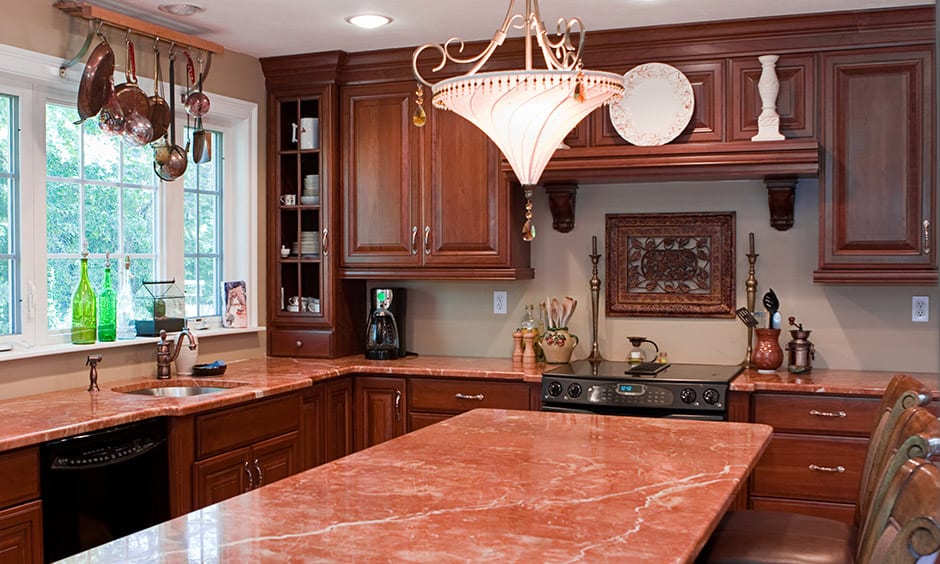
Image Source: designcafe.com
Red is the rarest granite color and it is not commonly used for kitchen countertops due to its shade. Unfortunately, you cannot easily incorporate red granite into a kitchen’s design unless the entirety of the interior is colored neutral. However, if you discover the granite has red in it but with white, yellow, blue, or silver flecks, you will likely use it more often than the pure red granites.
2. Granite Edges
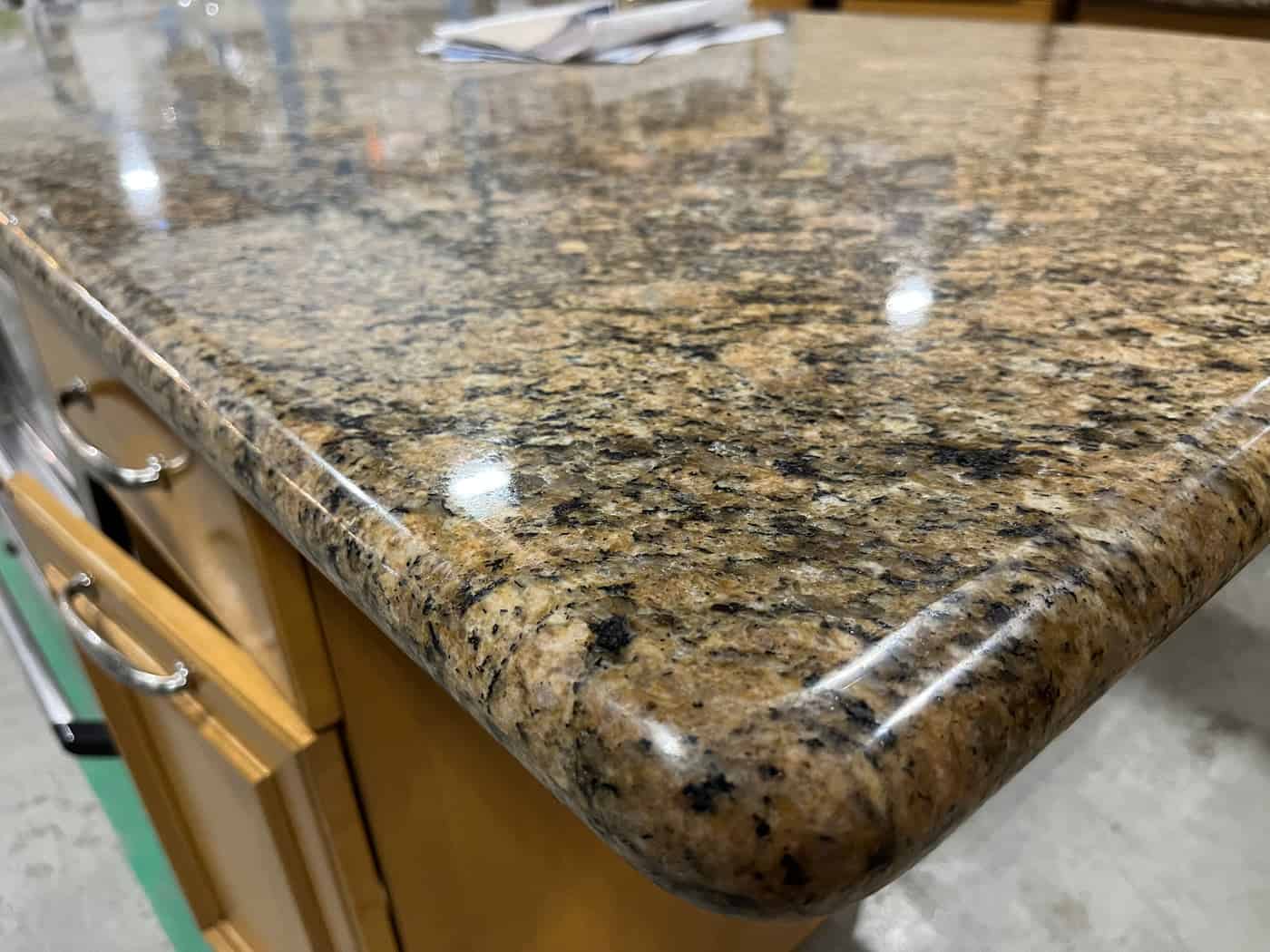
Image Source: shopify.com
Here in interiors, granite is available on so many edges. Surprisingly, the edge you select dictates the form of your countertop; hence, think carefully since the design could alter your kitchen design. Here are the most common kitchen granite countertop edges for your reference:
- Beveled Edge: with the application of a clean and traditional geometric on a 45-degree flat cut corner.
- Bullnose Edge: a smooth cut that looks perfect for people who want thinner-looking countertops.
- Eased Edge: One of the old edge styles which has features of roundness as well as sharpness to its name.
- Ogee Edge: a design that has an extended, rounded bottom groove design mostly suitable for large kitchens.
- Straight Edge: a restrained, slightly curvilinear design suitable for contemporary interiors.
- Waterfall Edge: a cut similar to the ogee, but you would have multiple ‘waves’; that’s why it’s named that.
As you can see, there are many edged styles to consider to suit any kitchen interior you would want. Consult with a reliable installation service to select the one that will be appropriate for a kitchen.
3. Factors That Influence Price
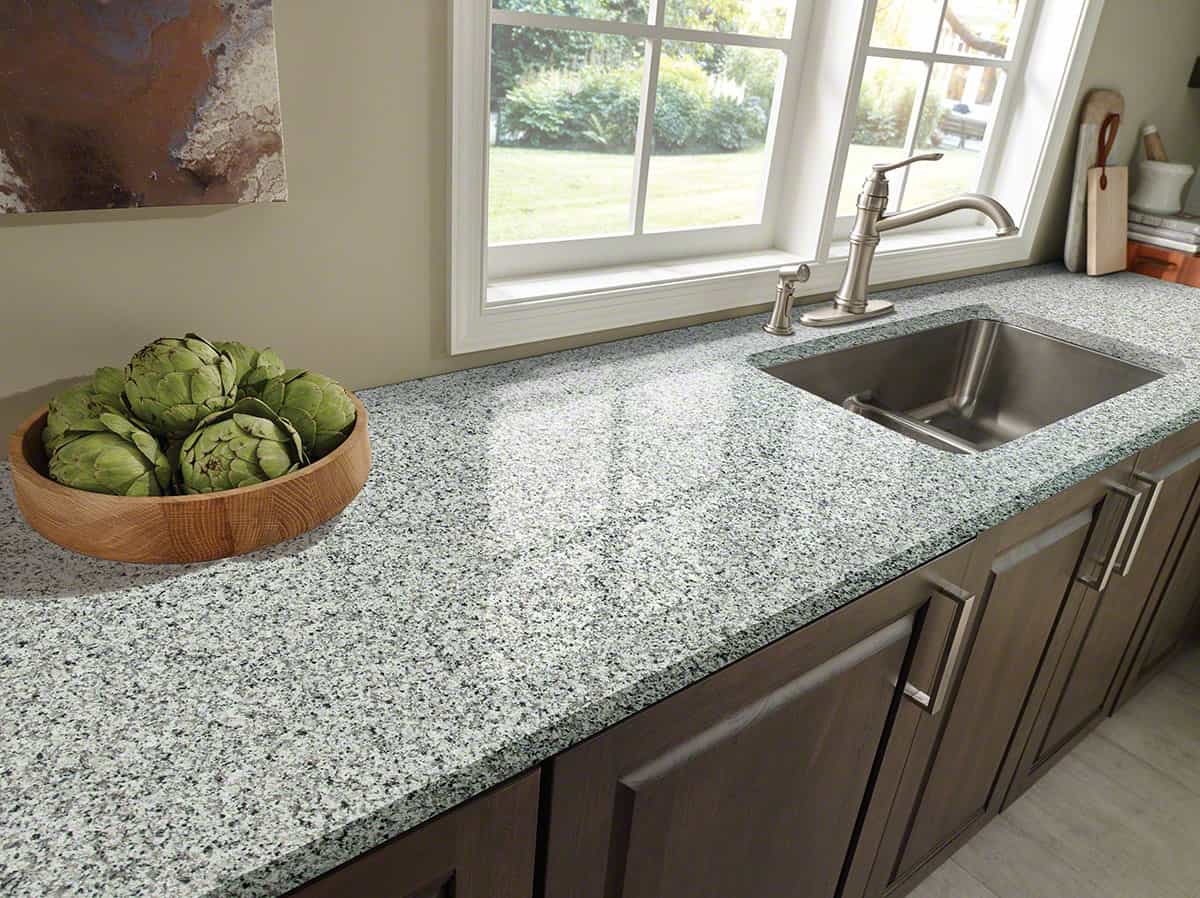
Image Source: msisurfaces.com
Granite is an affordable stone used in interior and kitchen design. However, what it costs is relatively low and the higher the quality the more it will cost you to acquire. In addition to the above factors it embraces color, pattern, edge, its grade, and the complexity of the invention decides its price.
Granite has a grading system that encompasses three levels, and each level as is characteristic of it has a quality parameter.
- Level 1, or low-grade granite, is an entry-level stone suitable for commercial structures. It can be usually precast for use in the construction of houses. It also cuts the toughest material at around 3/8 inch. Level 1 granite typically has simpler designs and colors.
- Level 2 or mid-grade granite has other markings and even more colors in comparison with Level 1. Its average thickness measures about ¾ of an inch of thickness on average. A minimum of eighty-five percent of the Level 2 granite sold globally finds its way into Brazil and India.
- Level 3, or high-grade granite, is also imported from India or Brazil and is of the finest quality. Level 3 granite stones have rarer colors, patterns, and veining and can be cut up to ¾ inches or more.
The other feature is, therefore, the complexity of work that defines the nature and requirements of jobs in an organization. It is also important to note that an inexperienced granite installer will give a cheaper service but with a poor quality job. As a result, you have to consider the advantages and disadvantages and list all the specifications to make your kitchen look larger or more beautiful with a countertop within your budget.
4. Finishes
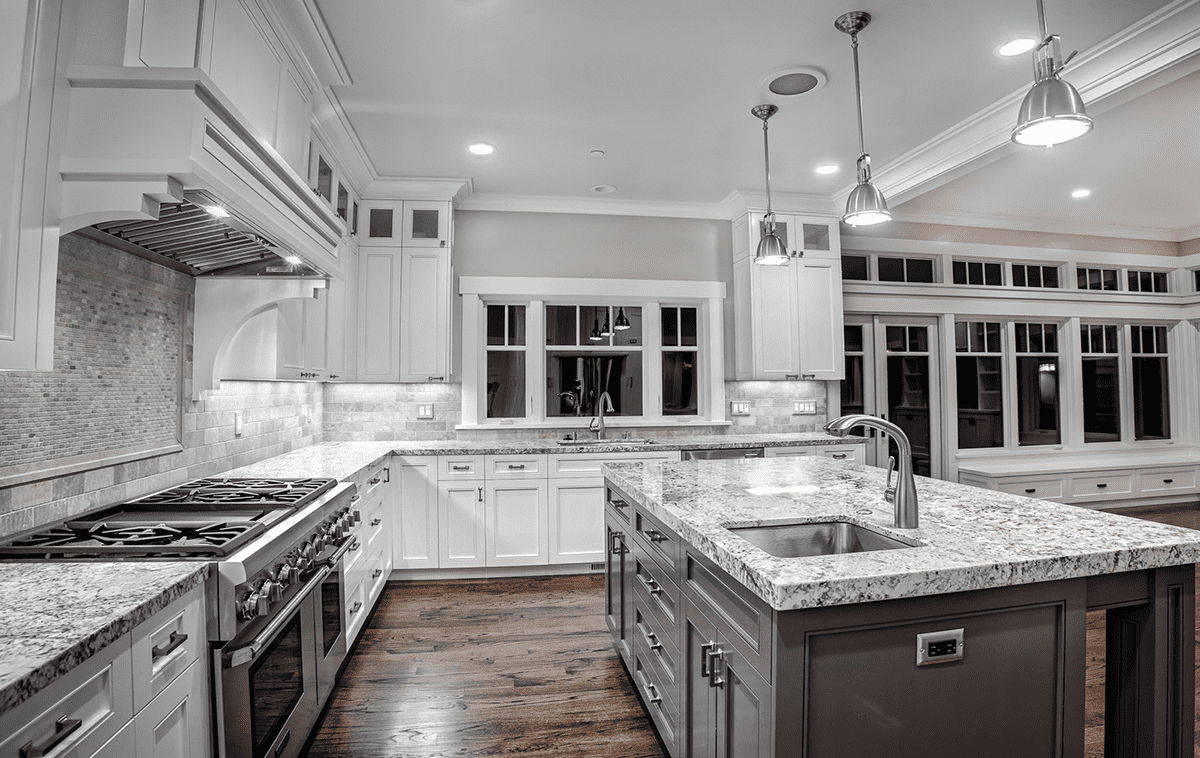
Image Source: patscolor.com
The best finishes for granite countertops fall into three categories.
- Polished. Some surface reflects to allow the color and texture to come out for an optimally rich look. The least porous coating is best for spills due to this. However, one can also see any dirt (and crumbs) lurking on it, which is hidden on a plain color background. Perhaps for that reason, polished remains the most preferred finish.
- Honed. This finish is still powder-like, but not shiny or reflective in the same way a true glossy finish of some other type of furniture is. A shine cuts down the reflection and the presence of imperfection although it does not enhance color as a gloss would do. It has a much more open structure, the surface is much more permeable.
- Leather. This kind of finish is similar to that of textured leather and is applied by fabricators through the use of brushes with diamond-like tips. Less permeable and enhances color, like a polished one, and a honed surface masks crumbs and stains.
Granite Kitchen Countertop Ideas and Designs You Can Use in Your Kitchen
1. Granite Countertops in Modern Kitchens
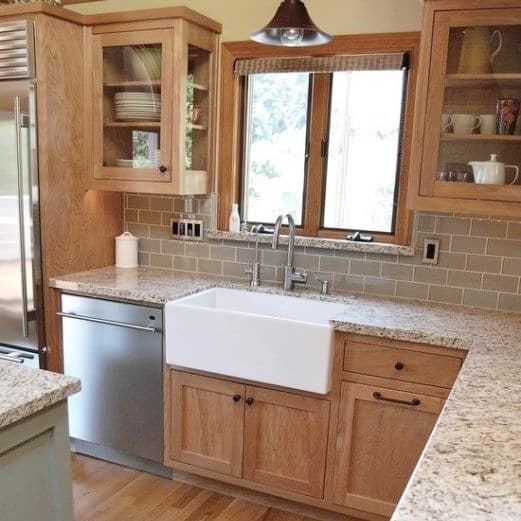
Image Source: squarespace.com
In modern kitchen design create focus on plain granite counters by highlighting the natural colors that are present on them. Use clear edges, neutral hues, and sparse patterns for a robust, elegant surface. Here the light earthy material helps to offset the multicolored backsplash and rich wood in this contemporary kitchen.
2. Granite Countertops in Traditional Kitchens
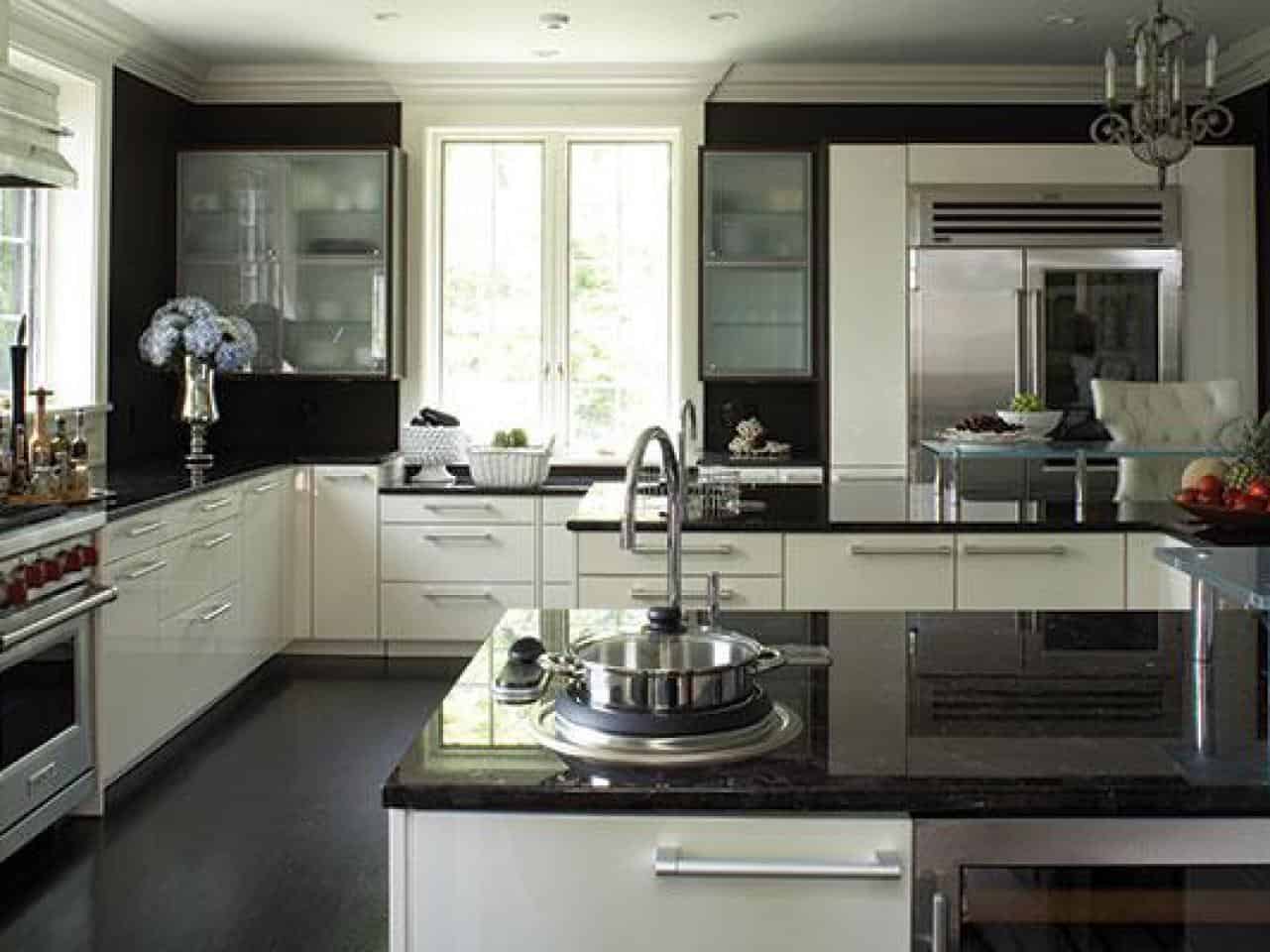
Image Source: hgtvhome.sndimg.com
Traditional kitchens must contain the color and texture which are contributed from granite countertops for stairs views alternatively vintage furniture. The black and silvery granite color of the countertop in this kitchen complements the glass-fronted cabinets and the wet look of the polished nickel hardware. The Ogee edge adds to the sophisticated appearance.
3. Contrasting Granite Countertop

Image Source: decorpad.com
While choosing materials to use in your kitchen, you should consider using a granite countertop to offset the cabinet hue and finish of the hardware. The black color they provide gives an instant luxurious look to the interior design of your kitchen. The white color of the cabinet and the reflective knobs set off the black granite. Their richness and delicate texture draw visual focus to the otherwise plain room.
4. Granite Countertops and Backsplashes
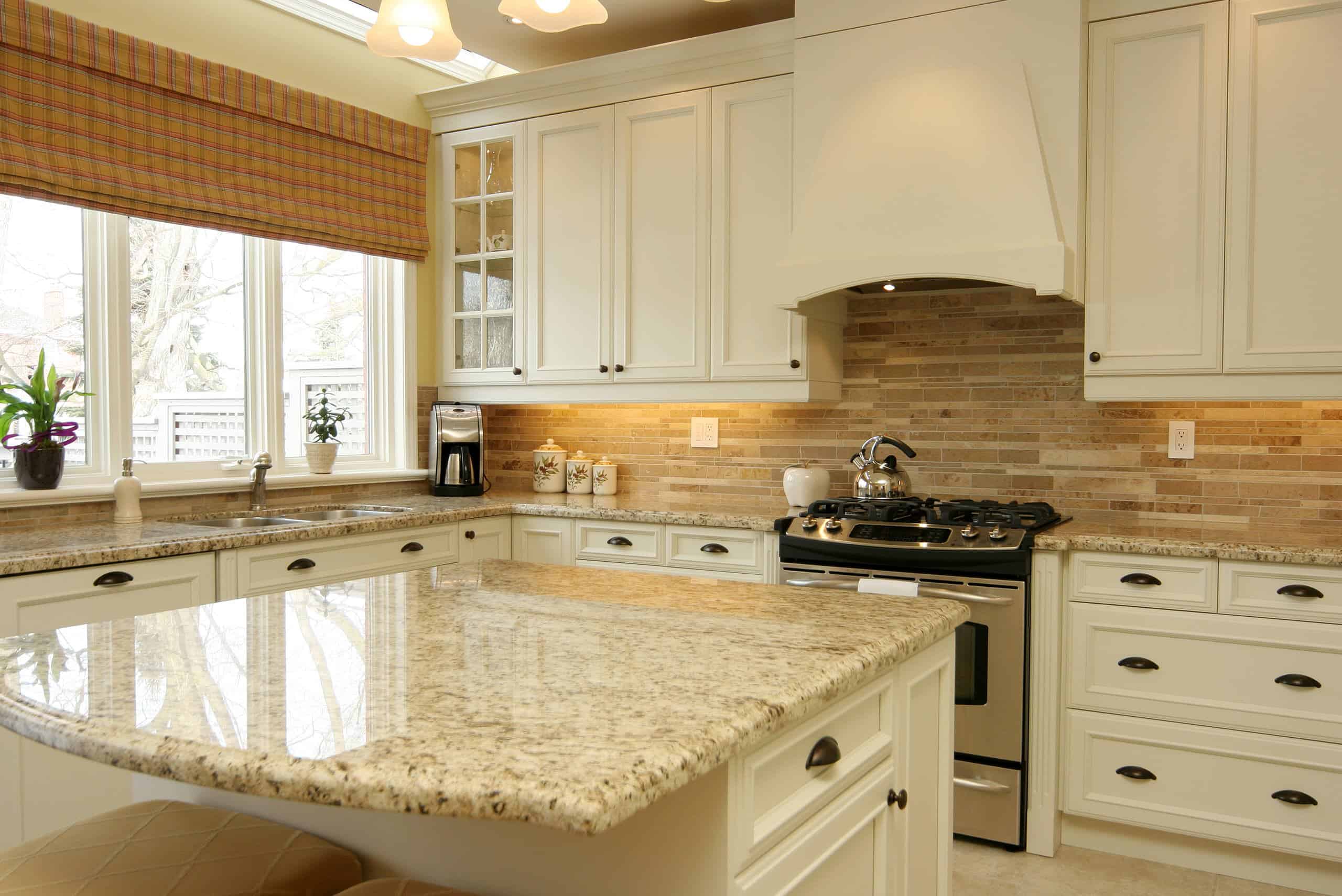
Image Source: st.hzcdn.com
Granite is a very durable product inherently, and when it comes to cleaning it is one of the easiest materials, so it would be a great material for backsplashes. Another idea that should give a proper look is to have a granite countertop to run halfway up the wall. This countertop style looks modern when used with a white or colored cabinet, but it also works well in rustic settings when coupled with wood cabinets.
5. Creative Granite Countertop Design
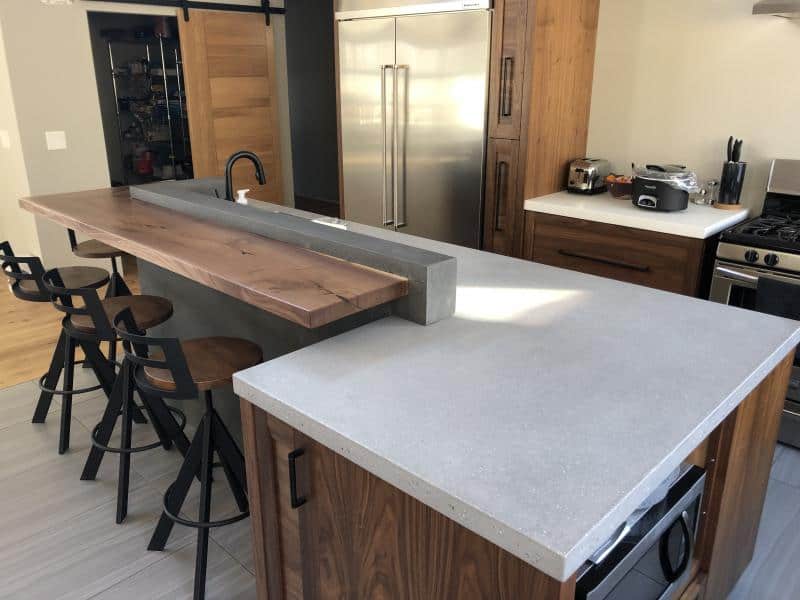
Image Source:residentialproductsonline.com
Granite may be cut and installed in a way that meets the needs of a certain kitchen as well as your preferred style. This granite countertop extends to create an Apron that protects the Island from the daily wear and tear as well as beautify. The natural stone top and wood base go well together.
6. Curved Granite Countertops
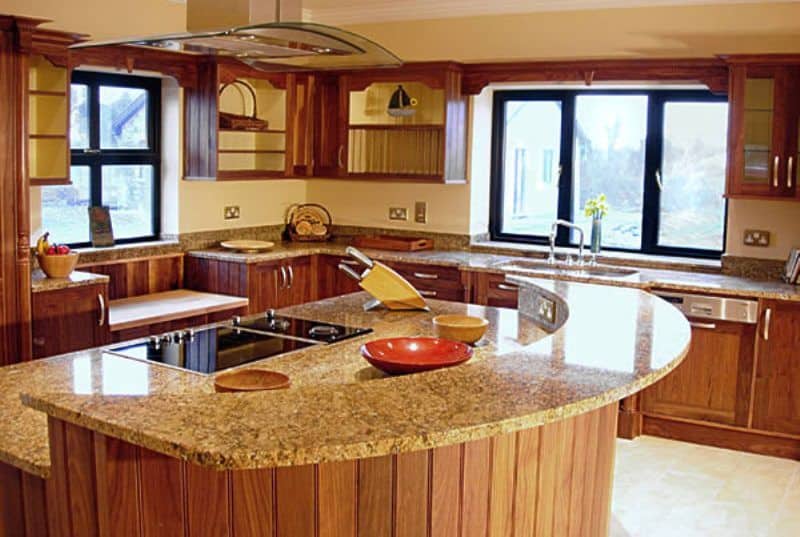
Image Source: i.pinimg.com
Curved granite worktops are a practical choice for busy kitchens due to their larger application of edge details. Stone more so the granite has jagged surfaces and pointed edges. Correct lines reduce the harsh angles and cooking and dining for the chefs and guests is more comfortable.
7. Marbled Granite Countertop
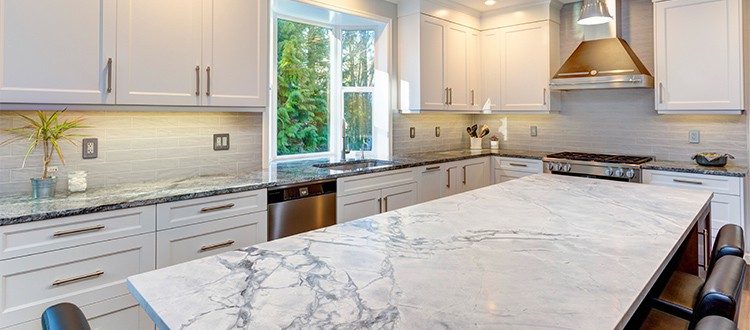
Image Source: limestone.com
Marbled granite has color and texture streaks that run throughout the stone. It is a light-colored granite with this pattern and it is possible to get an almost real marble look and feel. Darker colors make the veins and swirl pop, creating a dramatic impact.
Advantages of Installing Granite Countertops
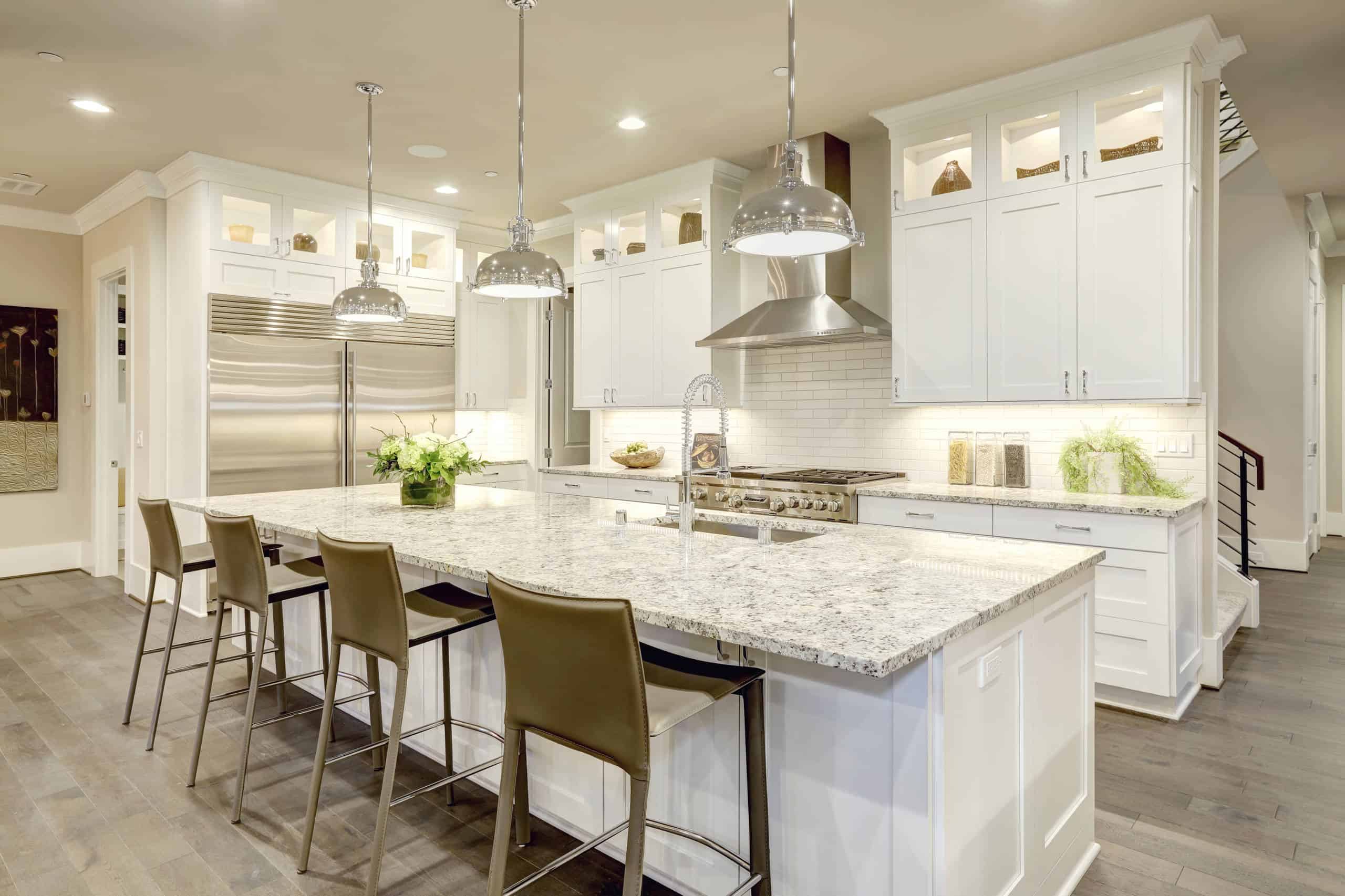
Image Source: st.hzcdn.com
Granite countertops are beautifully framed, are extremely hard can withstand scratches and staining, and require low amounts of cleaning. Therefore granite is a good choice for your home since it has some of the most useful advantages for your home.
1. Durability
Granite is a beautiful and widely used countertop material. It does not get scorched or stained whenever hot pots are put on it. Granite is ideal for use in the kitchen since it becomes a stain, chip as well as scratch immune in case you want your surfaces to retain their looks for a long time.
2. Attractive Appeal
This smooth, strong natural stone is also visually appealing. In case you want to install a new kitchen that will be trimmed with class and sophistication, granite is the material you will need to use. There are different shades and tints available for you to select from so it’s possible to come up with a unique kitchen as they are all available.
3. Effortless Cleaning
Granite is a stunning, long-lasting countertop that requires little upkeep. The kitchen countertop materials are also immune to stains, scratches, etching, or heat effects thus suitable for the heavy usage houses enjoy. Granite also has a lower tendency of fading when compared to other materials after some time. Do not use chemicals or cleansers that are not specifically intended for use on granite and keep your kitchen counters looking stunning by removing food stuffs with a soft cloth or sponge.
4. Simple to Repair
Granite countertops are extremely durable and easy to clean up. While granite can be damaged it may not scratch if a sealant is properly put on it. To repair a scratch or chip on the surfaces you can apply putty dye to match the satellite color.
5. Ideal Surface for Preparing Food
Granite countertops are ideal for cooking because they are heat- and stain-resistant. As with any quartz countertops, granite countertops also will not be affected by hot pans being placed on them directly. Additionally, granite countertops are very easy to wash with warm and cool water and just a mild soap solution. These surfaces are good for a kitchen island since germs will not have a chance to grow on them.
Conclusion on Granite Kitchen Countertops
As much as it is thrilling to upgrade your kitchen countertop, you must slow down things in certain areas. Pressing yourself forward can lead to acquiring a granite slab that is inferior, or one that does not match the interior design of your home. If uncertain, it is always advisable not to hesitate to consult with your countertop installer. The best thing about your countertop is that first and foremost people will see it in the kitchen and it should look great.
Frequently Asked Questions About Granite Kitchen Countertops
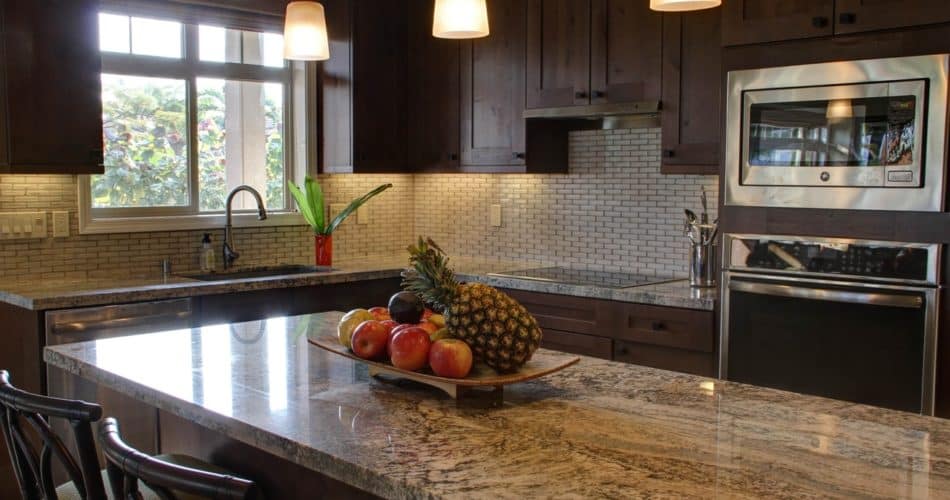
Image Source: xclusivekitchens.co.uk
1. Is granite good for kitchen countertops?
Granite is a remarkably durable stone and therefore recommended for kitchens that receive a lot of traffic. This is because the material used is heatproof and as a consequence placing the item near a cooktop or carelessly placing a hot pan on it will not harm it in any way. Granite is an extremely hard surface material and as such will not mark or scratch easily. Other than that it is really easy to clean and maintain and does not require very much of your time to keep it looking like new.
2. What is the downside to granite countertops?
While there is no better material to use in countertops than granite, the material is slightly more costly to purchase and install. Furthermore, granite is very sensitive to staining, and in case it is not polished and sealed, it becomes a big worry as we use acidic foods and beverages.
3. Which is better, quartz or granite?
Granite and quartz are both expensive products used in the construction of countertops, and elevate the worth of a home. Granite is a natural stone, unaltered and solid while quartz is a processed stone comprised of ground quartz and other stone scraps. This to a certain extent makes quartz easier to maintain since whilst granite only needs to be sealed once it is installed, quartz does not need sealing at all.
4. What type of granite countertops are best?
The most popular choice among homeowners right now for kitchen worktops is white granite. The pure white stone is flecked with additional color combinations in these slabs, but they are hidden by the surface’s brilliant reflections. Despite the light hue, there won’t be any stains that will last forever. Your kitchen will also seem brighter with the white granite countertops!
5. What is the best way to maintain granite countertops?
Most of the granites used nowadays are fairly easy to clean; some types of granite countertops such as those that have not been sealed will change color and will absorb dangerous bacteria. For cleaning granite we find a cleaner that has been particularly formulated for granite but a pH-neutral soap will suffice for daily cleaning if the cleaner cannot be found. We must not use strongly chemical based cleaner or anything containing vinegar as they have a tendency to strip the protecting wax applied during packaging.
In as much as we can prevent spills, it is important to minimize the chances of these injuries by cleaning up quickly in case of spills. To clean grease, juice or alcohol stains without harming the stone, try the following: hydrogen peroxide and baking soda stronger paste.


